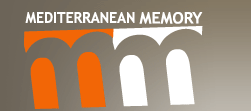Understanding the Mediterranean through the media
Introduction
The emotional charge, the depth of feeling surrounding our relationship with the Mediterranean may be one of the reasons making it is so complex to understand. The Mediterranean is a “crossroads” and the way we see it may be related to its history, geography, politics, ethnology or culture. In this mosaic of different ways of seeing, what part has been played by the images broadcast by French television over the last fifty years?
It goes without saying that behind the documentaries and news reports there is a whole scientific and literary legacy. Traces left by Napoleon's expedition in Egypt, the words of the Saint-Simonians, who wanted to make the Mediterranean “the nuptial bed of East and West”, the colonial designs on Algeria between 1839 and 1842. The “scientific” invention of the Mediterranean should strictly be tied in with the work of the geographers who identified the Mediterranean as a specific natural environment with landscapes seen nowhere else in the world. E. Recluse, for example, devoted a chapter of his Géographie universelle to the Mediterranean. Then with F. Braudel, the Mediterranean became a “historical character” and many others found inspiration in the Mediterranean, including Jean Ballard, who, in Les Cahiers du Sud, makes the southern shores, Islam, an integral part of the Mediterranean, as distinct from the Latin-based Mediterranean so praised by C. Maurras.
As a means of mass communication, television also shapes the way we see the Mediterranean. What are the characteristics favoured by television? Are some characteristics ignored in order to foster a consensus among the public? The MedMem project derives some of its legitimacy from this thought, because it enables us to compare the way images are produced all round the Mediterranean. This first look, although only considering French images, tries to produce a methodological approach to the key role played by the media in our perception of a certain reality. MedMem's site allows us to go even further into this interweaving of images.
For greater clarity, this analysis will focus on documentaries and filmed reports that see the Mediterranean as a complete entity. Unlike television news, these programmes focus more on consensus than conflict. If we divide French television between 1958 and 1998 into four major periods, we see interest in the Mediterranean has been growing. From 1958 to 1964, it constituted 5% of total production, from 1965 to 1974 10%, from 1976 to 1984 17% and from 1985 to 1998 68%. So in forty years, the Mediterranean has become a major theme on French television.

Introduction
1. The Mediterranean, an enviro...
2. The Mediterranean between ge...
3. For a cultural dimension in ...
4. Meeting with history: the Me...
Conclusion: the time of co-oper...
Bibliography


Abstract
The emotional charge, the depth of feeling surrounding our relationship with the Mediterranean may be one of the reasons making it is so complex to understand. The Mediterranean is a “crossroads” and the way we see it may be related to its history, geography, politics, ethnology or culture. In this mosaic of different ways of seeing, what part has been played by the images broadcast by French television over the last fifty years? ...
Author
CRIVELLO Maryline
Professor in history, University of Aix-Marseille, TELEMME, MMSH





